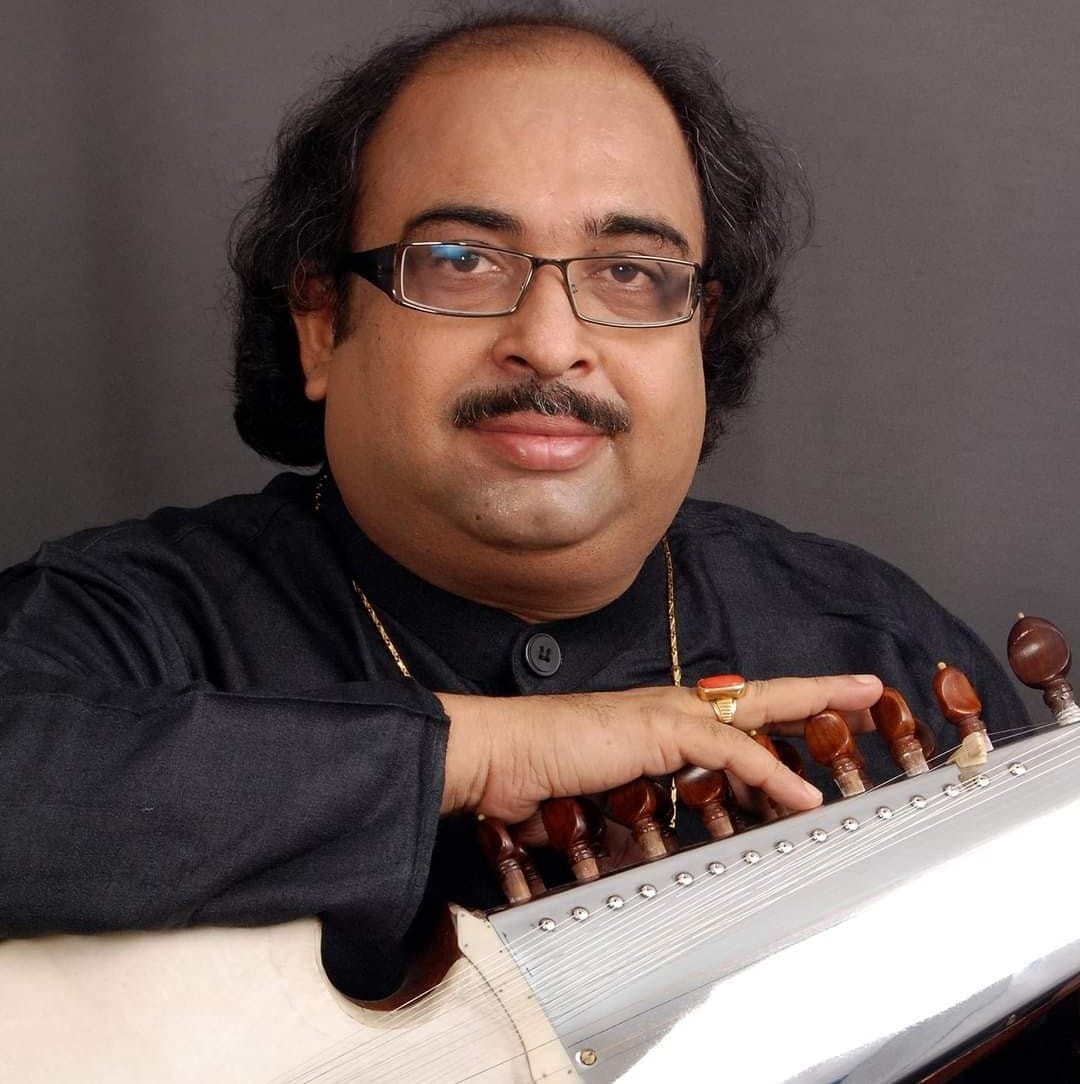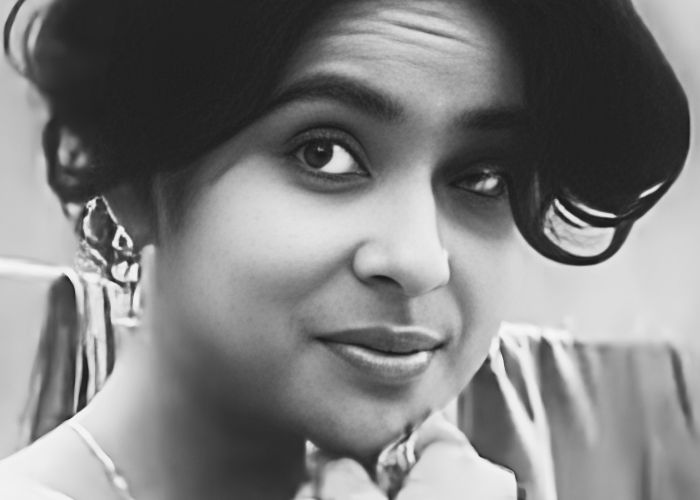
Pt Ravi Shankar had once said that it was possible to come up with that kind of a score for this cult film only because ‘Bahadur and Ritwik had come together’. Was it their lifelong friendship that created this magic in Subarnarekha? On Ghatak’s birth anniversary, PANDIT TEJENDRA NARAYAN MAJUMDAR strings together the reasons behind the excellence of his guru's phenomenal score
Why BFA commissioned this piece:
Unfortunately, too little has been archived on sarod maestro Ustad Bahadur Khan. There has been almost no study on the magic he created while composing for Ritwik Ghatak. Who better to understand this musical chemistry but a disciple of the maestro? Besides being a reputed sarod player, Pandit Tejendra Narayan Majumdar is also a skilled music director. That is why we invited him to write this tribute piece on the meeting of two great minds
In all these years of my life, there has been only one occasion when I was very nervous while playing the sarod. That happened the day I was asked to record for a project by someone from England who was trying to recreate the music of Ritwik Ghatak’s cinema. This gentleman had approached me after finding out that I was a disciple of Ustad Bahadur Khan saheb. It was a piece from Subarnarekha (1965) that had got me completely unnerved. How does one play a masterpiece whose conception I neither fathomed nor knew how to replicate?
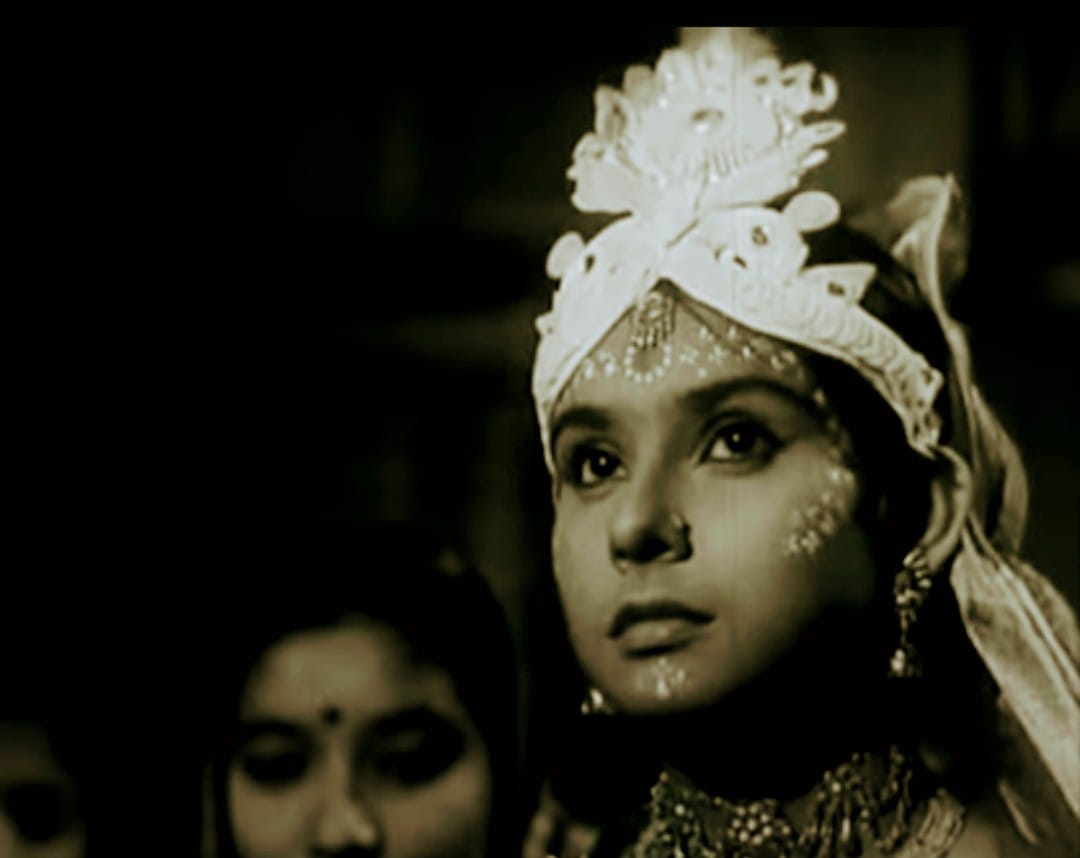
That was in the 90s. Kaushiki (Chakraborty) was a lot younger then. She was asked to sing a simple Bhairavi bandish - Mera dukhua - that Arati Mukherjee had sung in the original. I had to play the sarod portions of my guru for this project. I still get goosebumps hearing it and can easily relive that nerve-wracking time I had while trying to play those sarod portions.
What made me nervous was how my guru had played the sarod in such a way that it was difficult to guess where and when the vocal strains were taking over from his instrument
The scene was a barren landscape with Madhabi Mukherjee (as Sita) and Abhi Bhattacharya (as Ishwar). The camera pans and we can listen to the gentle sarod strains that gradually merged with Aratidi’s voice. Apart from the sarod, he used just a pakhawaj, a vibraphone and a surmandal. The effect was serene yet poignant. What made me nervous was how my guru had played the sarod in such a way that it was difficult to guess where and when the vocal strains were taking over from his instrument. Ajay-da (Pt Ajay Chakraborty) too was part of the project.
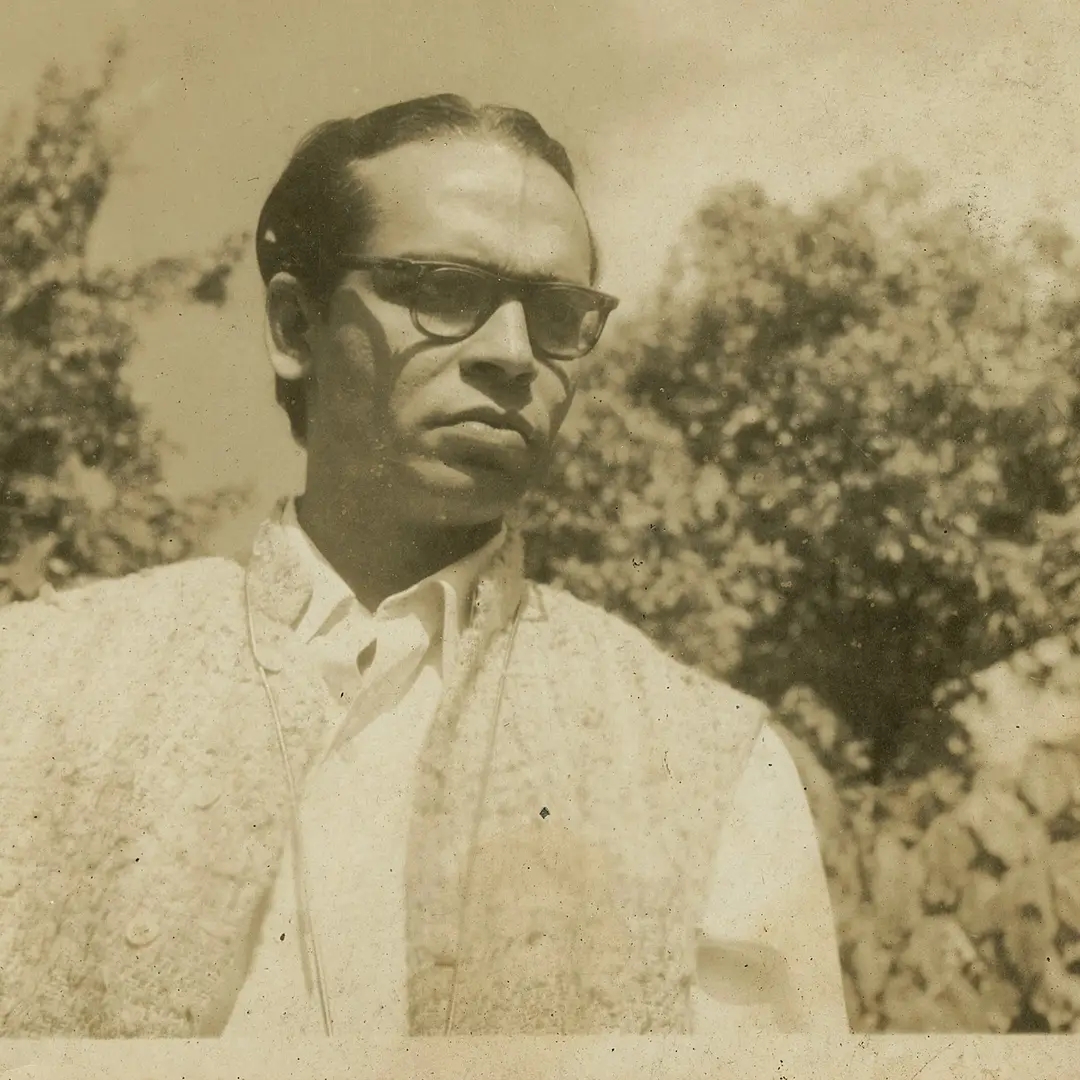
At the recording we had both agreed that it was tough to distinguish between the two tones. Ustad Bahadur Khan saheb had brought a new dimension to the music that was somewhere in between the tonality of sarod and vocal music. I must have listened to that piece a hundred times over and yet, I didn’t know how to get the same effect.
The uniqueness of Ustad Bahadur Khan saheb’s score was that it reflected the camaraderie Ghatak shared with him. There are numerous overlapping zones in their aesthetics, interests and even philosophy of life
Masterpieces, I strongly believe, can never be replicated. More so, if it is scored by one’s guru. The only good thing about agreeing to such a project is that it develops an understanding about the greatness of the music and how much more there is to learn from it. The uniqueness of Ustad Bahadur Khan saheb’s score was that it reflected the camaraderie Ghatak shared with him. There are numerous overlapping zones in their aesthetics, interests and even philosophy of life. Watching his film means effortlessly sensing this harmony of two friends who had emotional and creative kinship and resonated on the same note. Brevity was my guru’s strength. While using very few instruments, he would be able to express what Ghatak had in mind. Even Pt Ravi Shankarji had once told me that it was possible to come up with that kind of a score only because ‘Bahadur and Ritwik had come together’.
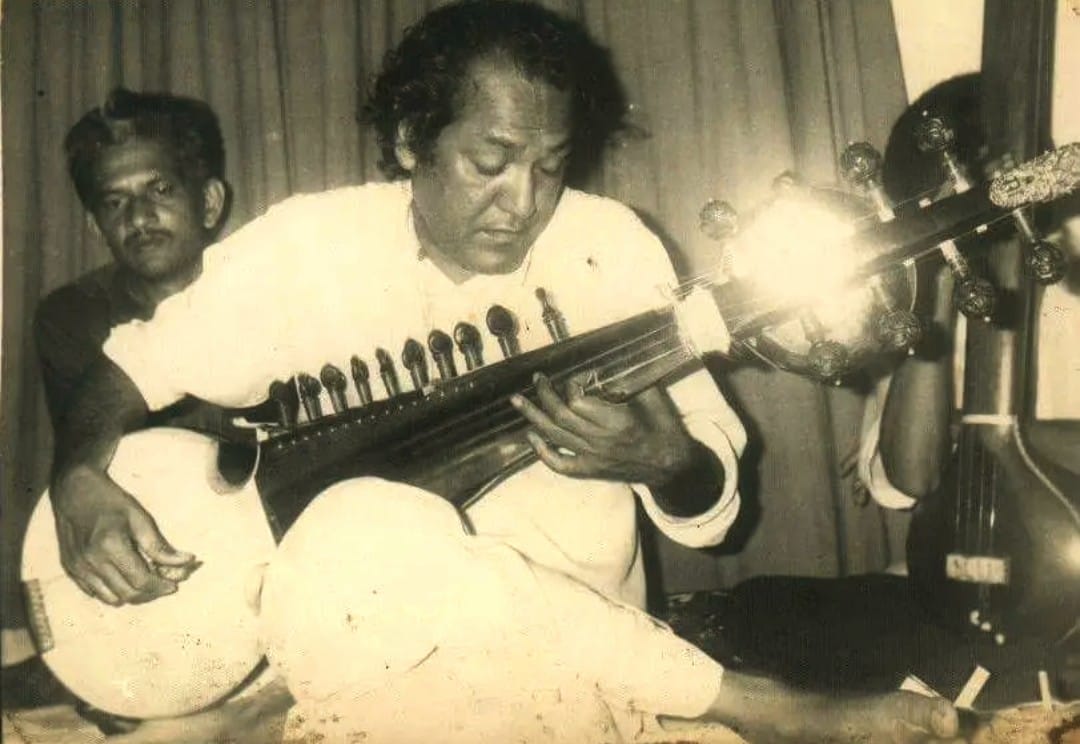
Old timers have said that my guru would need to see a rush only once and be able to say where background music would be required. My guru was so much in sync with him that he too could grasp that instruction immediately. I would like to believe that this aesthetic kinship strengthened because of their years of being close friends.
During those days, I had heard stories about how Bahadur Khan saheb’s work with Shanti Bardhan was appreciated. I have a hunch that it was during the course of this work that he got associated with Ghatak, who later had accepted my ustad as his guru too despite being six years elder to him. Not much is known about Ghatak as a sarod player though he was my guru’sganda bandh shagird
History says that my guru became famous as a composer from the time he did the music for reputed choreographer Shanti Bardhan who was once associated with Uday Shankar. My ustad had done the music for Shanti Bardhan’s ballet titled Meghdoot. That music was very popular. After Shanti Bardhan’s demise, his wife, Gul Bardhan, had recreated this ballet. My father, Ranjan Mazumder, had assisted Bahadur Khan saheb in the music for this recreation. I was fortunate enough to get an opportunity to play there. That was sometime in the late '80s. During those days, I had heard stories about how Bahadur Khan saheb’s work with Shanti Bardhan was appreciated. I have a hunch that it was during the course of this work that he got associated with Ghatak, who later had accepted my ustad as his guru too despite being six years elder to him. Not much is known about Ghatak as a sarod player though he was my guru’s ganda bandh shagird.
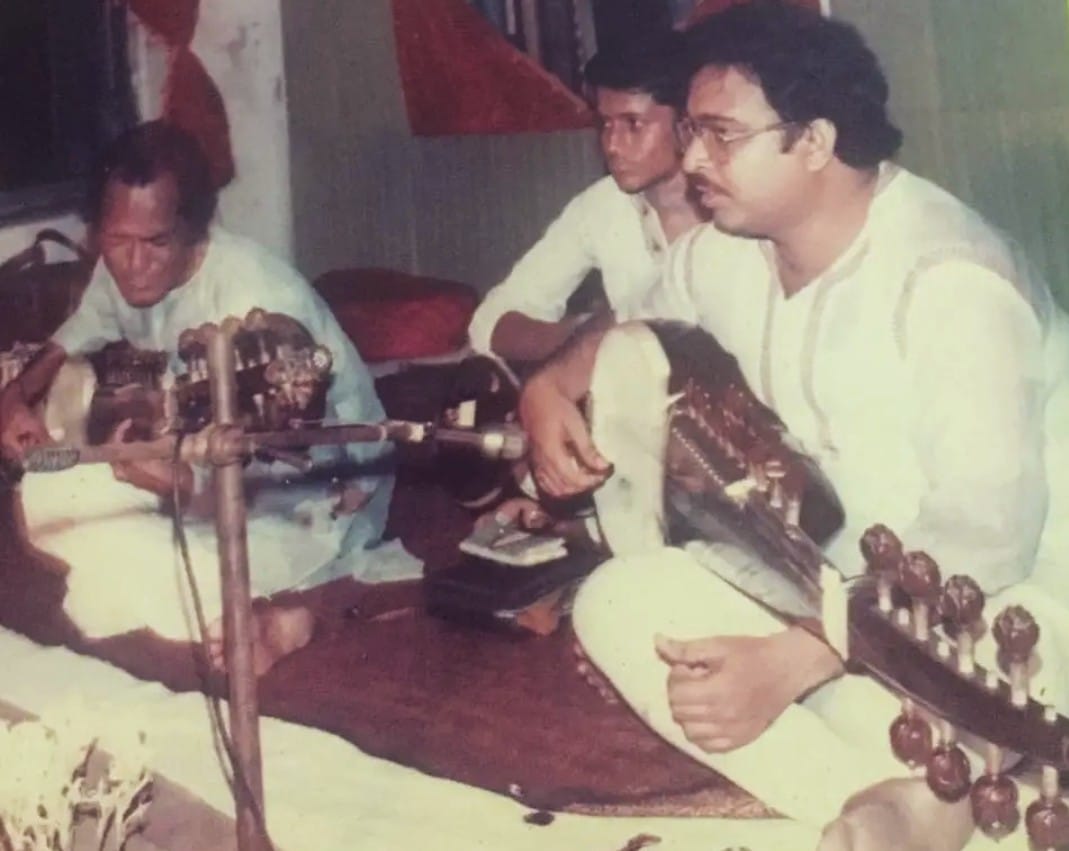
Every classical musician’s understanding of film music is unique. As far as my knowledge goes, my guru wanted to score a kind of music that never overarched the film’s subject. With minimal orchestration, his background score always complemented a scene. He left this mark right from his debut as a film music composer with Subarnarekha.
If we strain our ears, we can hear a whipping sound. That music was created by blending the sound of tar shehnai with the recreation of the sound of a whip. To my mind, this interplay between long periods of silence and location sound with this effect of whip and tar shehnai strokes is one of the finest examples of great background score in cinema
Remember the scene where Abhi Bhattacharya comes to the brothel? Madhabi Mukherjee immediately recognizes her brother as her first client and slits her own throat to save him from being witness to the shock. In this portion, he had used only a tar shehnai to heighten the drama. If we strain our ears, we can hear a whipping sound. That music was created by blending the sound of tar shehnai with the recreation of the sound of a whip. To my mind, this interplay between long periods of silence and location sound with this little effect of whip and tar shehnai strokes is one of the finest examples of great background score in cinema. It also demonstrates a fine control over proportion without any musical melodrama. This is a text-book example of how minimal background music can be used for maximum effect.
The same effect is there in the portion where he got Arati-di to sing a simple composition in raag Deshi. But it didn’t remain just another song in the film. Rather, it metamorphosed into the background music, elevating the scene to great heights. The loneliness of Sita in the pristine black and white frame gets heightened with this kind of a score.
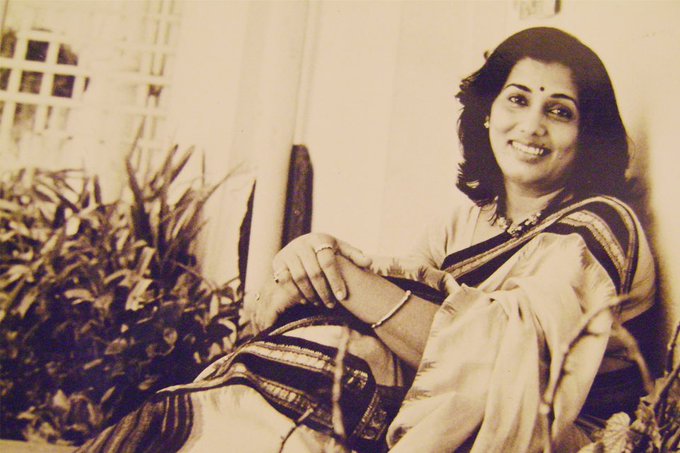
Arati Mukhopadhyay had sung the 'Mera dukhua' song in the film
Another favourite of mine is Madhabi Mukherjee’s wedding scene and subsequent departure from her family. Using bandish from raag Malkauns, Maru Behag and Kedar in shehnai for the background score of a wedding scene is very common. What makes this scene uncommon is the choice of ragas and the way Ustad Ali Ahmed Hussain’s shehnai was used. Two different raags – Gara and Puriya Dhanesri – have been juxtaposed to create two different moods. One is for celebration, another for melancholy.
The usage of instrument gets a different dimension in the fag end of the film where the camera focuses on Sita’s son and his memories. Initially, the focus is on the blades of grass. The music is hauntingly nostalgic of his mother. Here, the instrument used is the sound of bells. Slowly, the camera movement gets faster and the volume of the music increases as well. The sound of bells gets a fillip by the use of dotara playing Aji dhaner khete. This is the same song that the boy had heard his mother sing.

